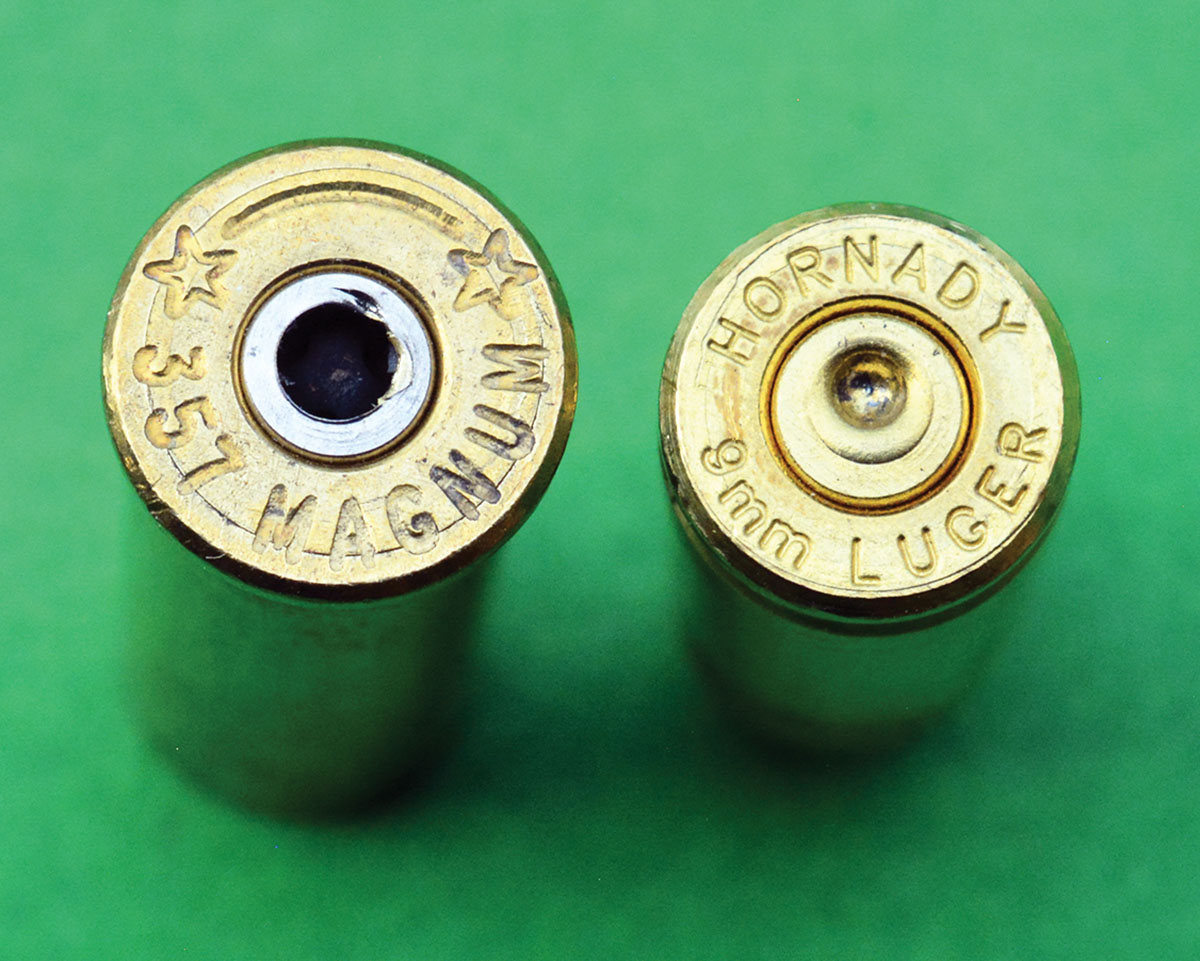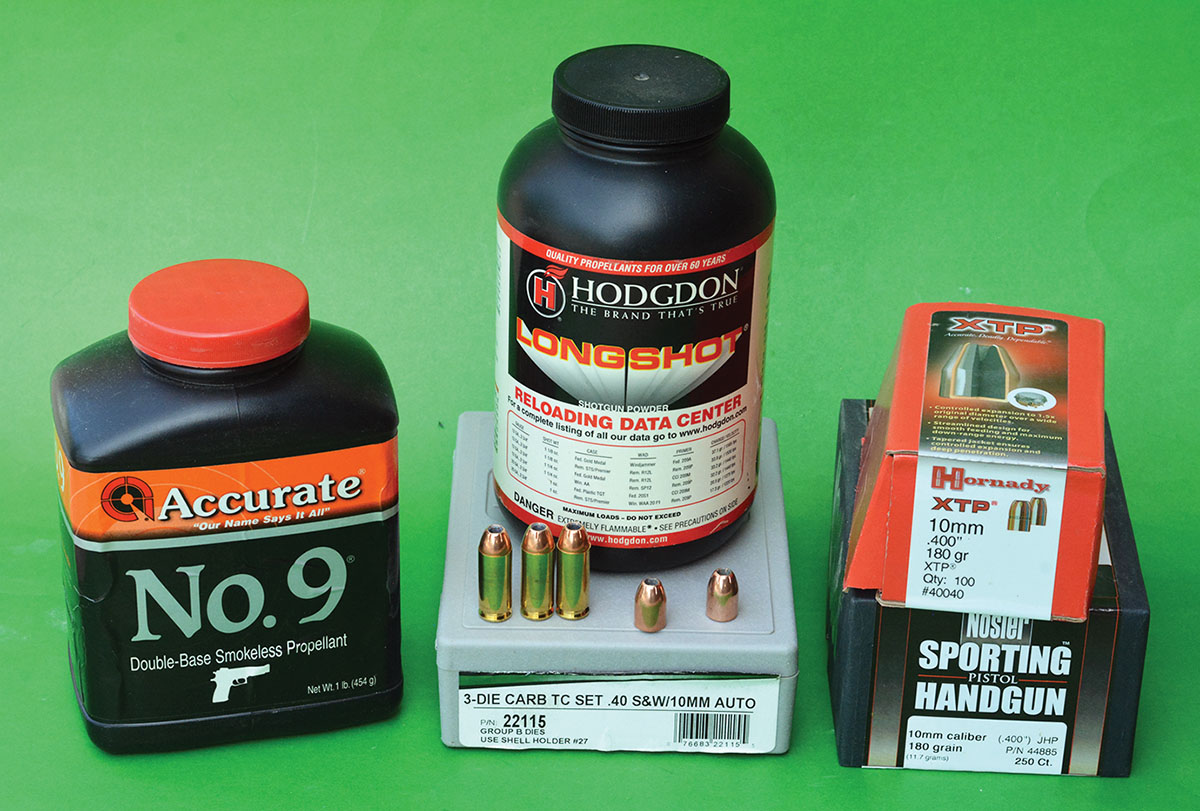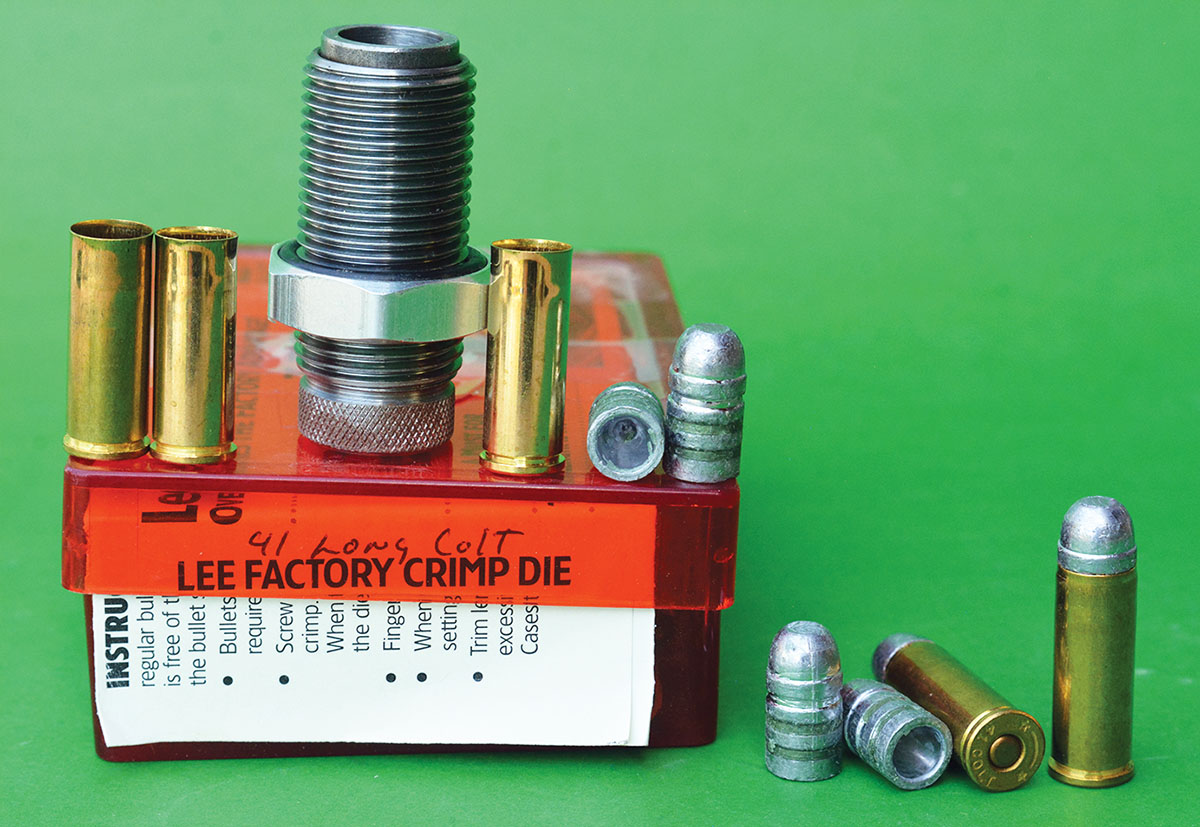Bullets & Brass
357 Magnum and 9mm Luger Revolver Primer Problems
column By: Brian Pearce | August, 24
357 Magnum and 9mm Luger Revolver Primer Problems

So my question is; are the above problems an ammunition issue, or a gun problem? Any insight that you can offer will be greatly appreciated. Incidentally, I greatly enjoy Handloader magazine and always look forward to your informative articles.
B.Y., via Facebook
A: You might find it interesting that the 357 Magnum and 9mm Luger have the same SAAMI maximum average pressure limits at 35,000 psi. Also, your handloads for each cartridge are generating approximately the same pressure and should be within pressure limit guidelines (depending on the case, primers used, etc.).
I have studied the sample cases that you forwarded. It seems that your gun has the standard SAA firing pin hole in the recoil plate. In other words, the firing pin hole measures around .105 inch for standard calibers such as 45 Colt, 44-40 and similar low-pressure cartridges, including the 38 Special. However, in 1935, when Colt first began offering the SAA in 357 Magnum, they experienced the very thing that you are. So within a year or two, they changed (for .357 caliber only) the firing pin hole to a smaller version that measures around .080 inch. When Colt introduced the 357 Magnum again within the 2nd generation series in 1960, the small firing pin hole was again incorporated, but this time was included with all calibers. This small change may not sound like much, but it greatly reduced the primer flow and deformation that often causes cylinders to freeze up or drag while rotating. USFA used the larger firing pin hole with most calibers; however, guns chambered in 327 Federal and 357 Magnum were fitted with the smaller firing pin hole.
It seems that your gun was fitted accidentally with the larger firing pin hole. I would suggest changing the recoil plate on your gun. It’s easy to do, but will require a qualified gunsmith to remove the barrel and correctly stake the new bushing in place.
Until you have this work performed, you could do a couple of things to correct the problem. Use primers with as thick of cup as possible, even Small Rifle primers, which will flow less. Or use reduced loads that generate around 25,000 pounds per square inch (psi).
10mm Loads for a Kimber Target II

So I’m hoping you can offer some guidance in regard to powder and beginning and maximum charge weights. I want to use the Hornady 180-grain XTP and the Speer 180-grain TMJ pushed to as high of velocity as possible without concerns of excess pressure or damaging my gun. Thank you in advance.
W.G., Missouri
A: During the late 1980s, the FBI formally adopted the 10mm Auto based on its outstanding performance and versatility. However, it seems that the full-power loads were the cause of its (temporary) downfall, as many agents found the recoil and recovery time to be a significant hindrance to good rapid-fire scores. At the request of the FBI, ammunition companies offered reduced loads that generally dropped the velocities of the 180-grain load from around 1,300 fps to around 980 fps. This resulted in the development of the 40 S&W, which could easily duplicate the ballistics of the “10mm FBI Lite” loads and could be housed in smaller and lighter guns.
Today, 10mm Auto factory loads are all over the place in regard to power and pressure. In essence, each ammunition company loads it to pressures that they consider safe in all pistols. For the record, current SAAMI pressure guidelines are 37,500 psi, however, few companies load their ammunition to that pressure level. The reason is that there are many pistols that feature a rather generous feed ramp (sometimes incorrectly referred to as an unsupported chamber). If the pressures are too high when the gun begins to unlock and cycle, the bottom of the case can rupture, which is potentially dangerous. For these reasons, most ammunition companies limit pressures between 27,000 to 30,000 psi, which explains their more moderate velocities.
Regarding your Kimber; it features a well-supported chamber and is an excellent choice for full-house loads. Using the Speer or Hornady 180-grain bullets, I would suggest using 8.5 grains of Hodgdon Longshot powder and work up to a maximum charge of 9.5 grains for around 1,300 fps. Or start with 12.5 grains of Accurate No. 9 powder and work up to a maximum charge of 13.5 grains for 1,250 to 1,275 fps in most pistols. Use standard Large Pistol primers such as the CCI No. 300 or Federal No. 150 and preferably use Starline cases, as they will produce less pressure than most other cases. Both of the above loads produce less than 35,000 psi, but readers should be aware that they may not be suitable for all guns, especially those with heavily beveled feed ramps.
Accurate Bullets for the 41 Colt

The problem that I’m having is finding good bullets. I found some heel-style bullets online and loaded them up, but they are horribly inaccurate. I used a Lee crimping die and the crimp seems firm enough, but the bullets just won’t shoot. Incidentally, the gun is in high condition and has a perfect bore.
So my question is; can you suggest a source for bullets that will shoot reasonably well? I’m not expecting match-grade accuracy, but it should shoot minute of soda can at 25 yards. Any load data that you can offer will be appreciated.
M.H., West Des Moines, IA
A: You don’t state what load or what heel bullet you are using, but I’m guessing that it was probably Lyman No. 386177 that is listed from No. 2 alloy at 196 grains. I have experimented with the 41 Colt and for several reasons, I greatly prefer the inside lubricated 200-grain hollowbase bullet from Lyman mould No. 386178, which was much more accurate in my test guns. The problem is that Lyman no longer offers that mould and I’m unaware of a credible company that offers that bullet commercially. You might shop online for a used mould for sale, or MP Molds offers a hollowbase version that is very similar in design. If you don’t cast your own bullets (and you should) there are several custom casters that would be happy to make bullets for you with your mould. It is strongly suggested to have them cast from a very soft alloy (BHN of around 6 and not over 7) to allow the hollow base to properly obturate and slug up to seal gases and engage the rifling. Otherwise, you will be severely disappointed with the accuracy. I would suggest using a Small Pistol Magnum primer (for a fast pressure impulse time and to help the base of the bullet obturate) along with 4.5 to 4.7 grains of Hodgdon Titegroup powder. This load will reach 840 to 850 fps and will give respectable accuracy.


